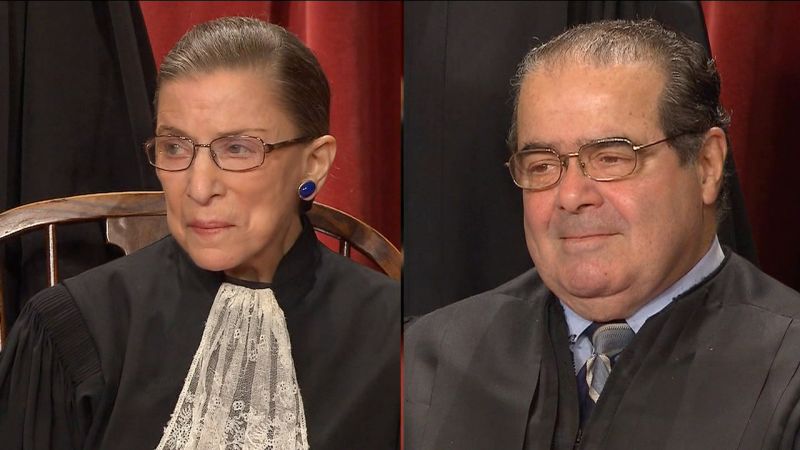

The essence of O'Connor's governing pragmatic social philosophy is revealed in her last decision in the Kentucky Ten Commandments case. This is precisely why the court, and the majority rulings Justice O'Connor's vote often provided, have become so divisive a force in American life. Supreme Court justices, whether they are moderate liberals like O'Connor or conservatives like Scalia, should separate their personal convictions about right or wrong or the role of God or religion in American life from their judicial interpretation of what the framers of the Constitution intended when they originally wrote and ratified the Constitution. As a justice, she came to embody the court's increasing willingness to invalidate the "government rules and regulations that offended her sense of right and wrong." In what direction did O'Connor's swing vote lead America? Newsweek's Evan Thomas and Stuart Taylor Jr., attempting to assess Justice O'Connor's Supreme Court career, described her as "generally.in the center not of public opinion generally, but of elite opinion, the consensus of the chattering classes that is often to the left of the rest of the country."Īccording to Thomas and Taylor, Justice O'Connor slowly steered the court to the "moderate-left side of the cultural divide" on such volatile issues as abortion, church-state separation, and women's and gay rights. How did O'Connor steer the Supreme Court? In 2001, Jeffrey Rosen declared in the New York Times Magazine that "we are all living now in Sandra Day O'Connor's America." In the year 2000, she was in the minority only once, exceeded only by Justice William Brennan's zero dissents in 1967. In the past decade she voted with the majority (meaning she provided the majority) in 75 percent of the Court's 5-4 decisions. Justice O'Connor's vote has been pivotal in determining the direction of the Supreme Court and thus American jurisprudence and law. The people's will was frustrated not by the original intent of the Constitution's framers, but because it offended five justices' sense of right and wrong. Yet 70 percent of the American people support a ban on the procedure, which is reflected in the fact that a federal version of the ban passed both houses of Congress in 2003 with substantial majorities that included a significant number of Democrats. For example, a law banning a late-term abortion procedure that kills often-viable infants, known as partial-birth abortion, was declared unconstitutional in a 5-4 Supreme Court decision in 2000, with O'Connor providing the deciding vote ( Stenberg v. If activist justices like O'Connor remain in the majority, they will continue to frustrate the right of the American people to govern themselves through their elected representatives. And, if she is replaced by a younger version of herself, it will make it virtually impossible to reverse the Supreme Court's liberal hegemony over American life for possibly a generation. However, if Justice O'Connor is replaced with a Scalia/Thomas-type justice, the Supreme Court will have taken a significant step back to the right on a host of social and legal issues. If Rehnquist were to be replaced by a justice in the Scalia-Thomas mold as promised by President Bush both in the 20 presidential campaigns, the court's ideological equilibrium would remain unchanged. This is why O'Connor's retirement is so much more volatile and controversial than the expected retirement of the ailing Chief Justice Rehnquist. Breyer) and two moderate swing votes (associate justices Anthony M. Souter, Ruth Bader Ginsburg, and Stephen G. Rehnquist, and associate justices Antonin Scalia and Clarence Thomas), four liberals (associate justices John Paul Stevens, David H. The current court, which has remained unchanged for more than a decade, has three reliable conservatives (Chief Justice William H. Second, Justice O'Connor has become the single most critical swing vote on a sharply ideologically divided Supreme Court.

In the current court majority's judicial philosophy the people's duly elected president, and a majority of their duly elected senators and congressmen, can be brushed aside by the political views of the majority of the justices. Supreme Court has, beginning with the Warren Court in the 1950's, reached a position of unprecedented political ascendancy in deciding how Americans live their lives. Why do religious and social conservatives view the coming struggle to replace Justice Sandra Day O'Connor with a strict-constructionist, original intent jurist as one of the most critically important fights of the past half-century?įirst, the U.S.


 0 kommentar(er)
0 kommentar(er)
